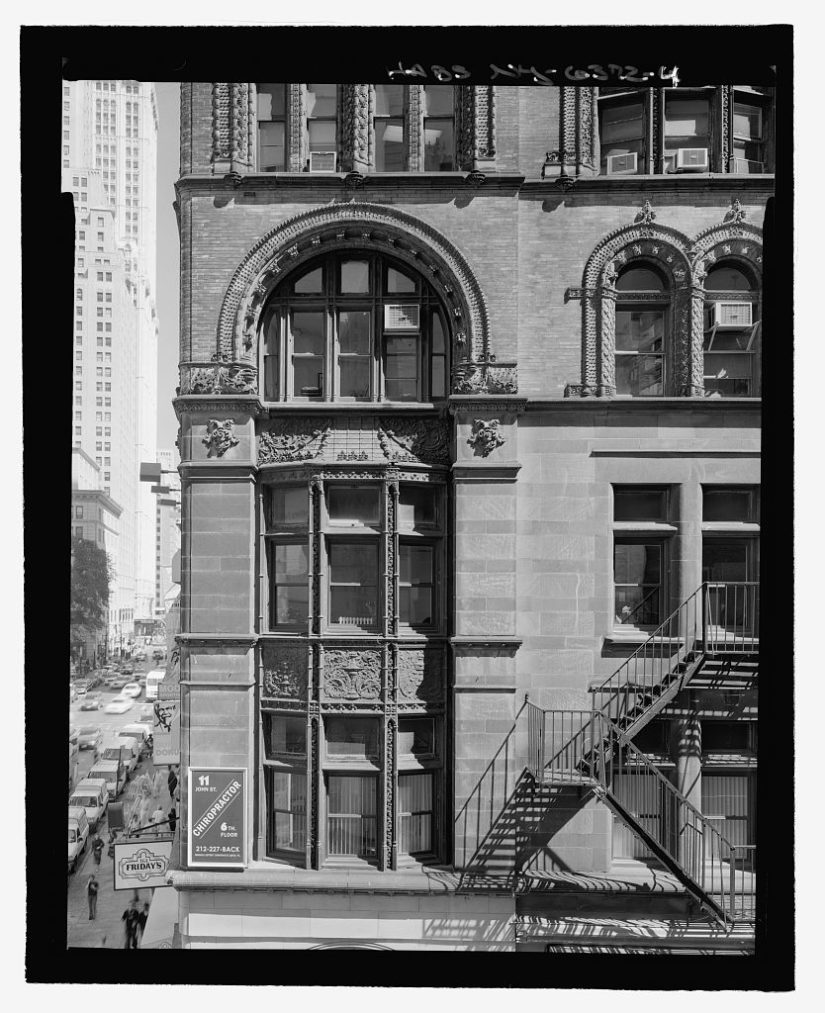
Roger P. Lang
Architect Roger P. Lang was the chairman of the Boston Landmarks Commission before becoming involved with many preservation battles spearheaded by the New York Landmarks Conservancy.
Roger Philip Lang was born in Freeport, New York. He earned his bachelor’s degree in architecture at the University of Michigan in 1966. Upon graduation, he served with the Army Corps of Engineers in Vietnam.1
As an architect, Lang worked on renovation projects for Stahl Associates. He later formed the architecture firm Lang Associates in 1979. As project manager, he was responsible for restoring the historic Boston buildings of Quincy Market and Faneuil Hall in 1968.2 This project was successful in revitalizing the historic district for modern uses. The project also demonstrated that preservation could be used to reinvigorate a commercial area while maintaining its historic integrity.
As Chairman of the Boston Landmarks Commission from 1979-1992, Lang fought hard for the preservation of both private and public historic houses.3
Lang spent the latter part of his life serving as the Director of Community Programs and Services at the New York City Landmarks Conservancy from 1992-2008.
Lang died on March 31, 2008. He was 64 years old.
Boston Landmarks Commission
Chairman, 1979-1992
New York City Landmarks Conservancy
Director of Community Programs and Services, 1992-2008
When Roger Lang relocated to New York City, he was appointed Director of Community Programs and Services at the New York Landmarks Conservancy.4
Roger Lang was heavily involved with the preservation of the structures on Ellis Island. The abandoned structures on the south side of Ellis Island were listed on the National Trust for Historic Preservation's 1997 "America's 11 Most Endangered Historic Places."5 During his time at the New York Landmarks Conservancy, Lang advocated for restoring and rehabilitating these abandoned structures starting in 1992.6 Along with the National Park Service, Lang was instrumental in the Ellis Island stabilization project. This project was fully initiated in 1996 and completed in 2006 after three stages of work.7 There were 30 buildings total. The project started with rehabilitating the 1909 Office and Laboratory building, which served as the model for stabilization techniques for the remaining structures. These structures included a mix of hospitals and psychiatric wards, the ferry building, and immigration buildings.8 The Landmarks Conservancy later facilitated the development of the not-for-profit group, Save Ellis Island!, Inc. in 2001.9
Though an advocate and supporter of preservation, Lang was not adverse to contemporary development. At times, his views of preservation were unconventional. Lang testified to the New York City Landmarks Preservation Commission in favor of the James Polshek design of the main entrance to the Brooklyn Museum of Art, reaffirming his belief that preservation could co-exist with contemporary architectural additions.10
In addition, Lang also played a significant role in the designation in 2005 of the Austin, Nichols, & Co. Warehouse located on the East River in Williamsburg, Brooklyn. Designed by Cass Gilbert, the Austin, Nichols & Co. Warehouse architecturally represented an amalgamation of historic styles with the emerging Modernist movement.11 It was also one of the few industrial buildings designed by the esteemed architect.12
Another preservation effort that Roger Lang was involved with was the preservation of the Corbin Building. The Corbin Building, designed by Francis Hatch Kimball in 1889, once stood as the tallest "skyscraper" at 11 John Street in Lower Manhattan.13 In 2003, the MTA planned to demolish the building in order to construct a new subway terminal on Broadway between Fulton and John Streets. Since the terminal was below ground, engineer Robert Silman had devised a way to stabilize the buildings foundation so that the MTA could build beneath the structure.14
Lang advocated for protecting the building from demolition, reasoning that there was a way in which to preserve the building and support the new construction of the subway terminal. In his mind, failure to do this would be comparable to the urban renewal projects of the 1960s, when new development demolished a plethora of historic gems in the city.15 Lang, as part of the New York Landmarks Conservancy, in conjunction with the Municipal Art Society, the World Monuments Fund, and the National Trust for Historic Preservation formed the Lower Manhattan Emergency Preservation Fund.16 This fund originated to generate money to preserve buildings damaged by the September 11th attacks. It is now being used to protect historic structures that are threatened by redevelopment in Lower Manhattan. Eventually the Metropolitan Transit Authority agreed to preserve the Corbin Building while building the new Fulton Transit station by "incorporating the basement and first floor of the building into the design of the station."17
Furthermore, Lang was also an ardent supporter of the restoration and reopening of McCarren Park Pool in Williamsburg, Brooklyn. McCarren Park Pool, built in 1936 by the Works Project Administration under Robert Moses, was among 11 of the City's largest community pools. The pool reopened in 2012.18
- ”Roger Lang, 64; architect pushed for preservation,” Boston Globe, 11 April 2008.
- Ibid.
- Ibid.
- David W. Dunlap, “Roger P. Lang, an Architect Who Supported Preservation, Dies at 64,” The New York Times, 4 April 2008.
- “Stabilization,” Save Ellis Island. Article retrieved 19 March 2016.
- Ibid.
- Ibid.
- Ibid.
- “Greatest Accomplishments: Ellis Island,” The New York Landmarks Conservancy. Article retrieved 19 March 2016.
- David W. Dunlap, “Roger P. Lang, an Architect Who Supported Preservation, Dies at 64,” The New York Times, 4 April 2008.
- “Roger P. Lang Dies at 64,” 7 April 2008. WPA. Article retrieved 19 March 2016.
- Ibid.
- Robert Lang, “DEJA VU ALL OVER AGAIN: Will Urban Renewal Thinking Prevail in Rebuilding Lower Manhattan?” Gotham Gazette. Article retrieved 19 March 2016.
- Ibid.
- Ibid.
- Ibid.
- Lisa Chamberlain, “Pressing a Claim for Dutch History,” The New York Times, 29 March 2006.
- Jen Carlson, “The Future of McCarren Park Pool,” Gothamist, 5 February 2008.